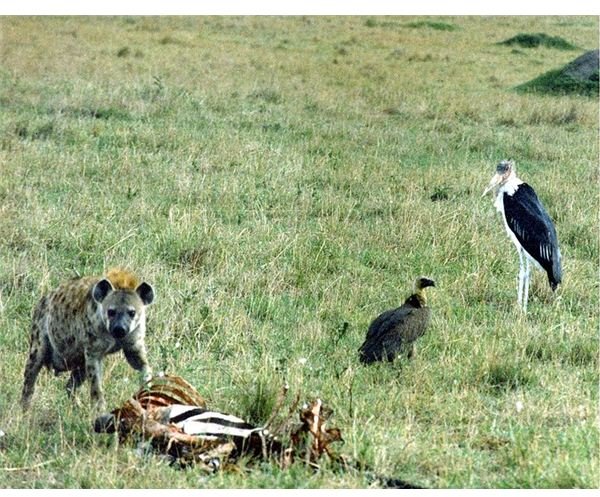Food Chains & Webs
10SCIE - Ecology
Finn Le Sueur
2024
Akoranga 2 Mahi Tuatahi
- Write the date in your book
- Think about your breakfast this morning, what did you eat? Write it down.
- Where did what you ate, get its energy? What about the organism before that?
Ngā Whāinga Ako
- Put a series of organisms into a food chain and explain the flow of energy
- Classify living things as producers, herbivores, carnivores, omnivores or decomposers
Write ngā whāinga ako in your book
Food Chains / Raupapa Kame
- We can give the energy relationship between many organisms as a food chain
- Each step in the chain is called a trophic level
- Energy flows from the bottom to the top

Interpreting Food Chains

- The first organism on a chain is a producer who creates their own energy (usually through photosynthesis)
- Recall: photosynthesis is the process of creating sugar and energy from sunlight!
Primary Consumers / Kaikame
- Primary consumers gain their energy by eating producers
- They are typically herbivores
- Herbivores gain their energy by eating only plant matter

Secondary.. Consumers

- Secondary and onwards consumers are typically omnivores or carnivores
- Omnivores gain energy by eating both plant and animal matter
- Carnivores gain energy by eating only animal matter
Why does the pyramid get smaller?
- At each trophic level, not all energy is transferred to the next level
- Energy is lost through heat to the surroundings
- Energy is lost through decomposition via decomposers, to be used by producers!

Ngohe: Ted-Ed
- Open Google Classroom and find the task on Feedback Loops
- Watch the video attached
- Answer the questions in the Think, Dig Deeper and Discuss sections
Pātai: Food Chain Effects

- Humans go fishing and catch too many fish, and reduce the population by 75%.
- What are the impacts of this on the food chain? Discuss with the person next to you and write in your book.
Whakatika
- The decrease in fish population means that sharks will have less to eat. This means some sharks may not get enough food, and die. This will cause a decrease in their population.
- A decrease in fish population means that barnacles will have fewer predators and be eaten less. This means their population will increase.
- An increase in the population of barnacles will mean more phytoplankton are being eaten, perhaps causing a decrease in the phytoplankton population.
Ngohe: Clusters
- Cut out the different organisms
- Group them into their different categories
- Glue them into your book in clusters
Akoranga 3 Mahi Tuatahi
- Write the date in your book
- Cut up the mix and match squares
- Match and stick them into your book
Te Whāinga Ako
- Define a community and how it relates to both living things and the area that they live in
Write te whāinga ako in your book
Competition / Whakataetae
- At each trophic level, organisms compete with other
(same and different species) for various resources.
- Food
- Water
- Mates
- Light
- Space

Food Webs / Māwhaiwhai Kame
- A food web is multiple interlinking food chains
- It displays the energy flow between multiple different food chains
- They better represent the real world than food chains

Flow-On Effects
- Changing the population of one trophic level can have a more complex impact on the food chain
- E.g. An increase in heron could lead to a decrease in eel.
- Pātai: In pairs, discuss and explain why this is true in your book.

Pātai
- Discuss and explain in your exercise book, the flow on effects that were to happen if a disease were to kill a large percentage of the zooplankton in the estuary.
- What would happen if both the zooplankton and flounder died off due to a disease?

Ngohe: Food Web Activity on Classroom
- Open Google Classroom and find the Food Web Activity
- Complete the two tasks on the document.
Mahi Kāinga: EP
- Education Perfect Task on:
- Producers
- Impact of Humans on New Zealand Wildlife
When doing Education Perfect tasks, always take your time and makes notes on any new information in your exercise book!
Akoranga 4 Mahi Tuatahi
- Open the Food Web Activity on Google Classroom
- Complete the activity in the next 10 minutes and Hand In
- Open the Pond Organisms Tūhura/Investigation document